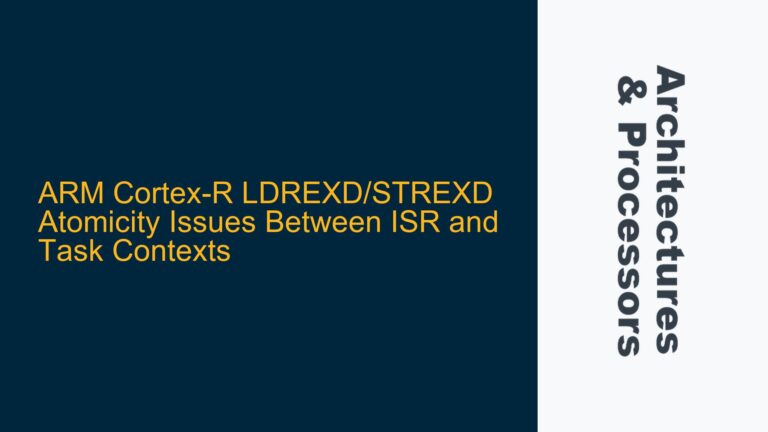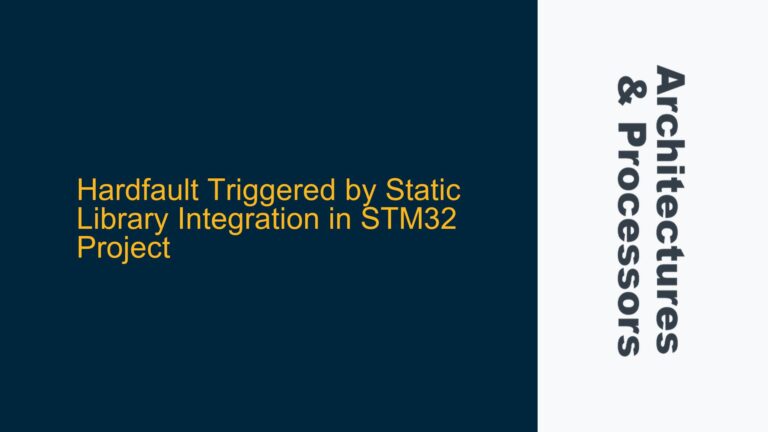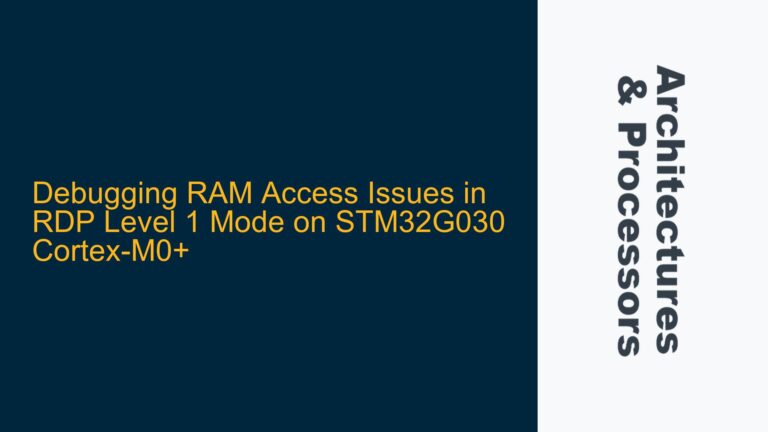ARM Cortex-A53 and Cortex-A57 Instruction Execution Pipelines
The ARM Cortex-A53 and Cortex-A57 processors, part of the Cortex-A5x family, exhibit distinct behaviors in terms of instruction execution due to differences in their microarchitectures. The Cortex-A53 is designed as an in-order processor, meaning it executes instructions in the exact sequence they are fetched from the instruction stream. This design prioritizes power efficiency and is well-suited for applications where low power consumption is critical. In contrast, the Cortex-A57 employs an out-of-order execution pipeline, which allows it to dynamically reorder instructions to maximize throughput and performance. This reordering is done internally by the processor’s execution units and is transparent to the software running on the CPU.
The Cortex-A57’s out-of-order execution capability enables it to exploit instruction-level parallelism (ILP) by executing independent instructions concurrently, even if they appear sequentially in the program. This can lead to significant performance improvements, especially in workloads with high ILP. However, this behavior also introduces complexities in memory ordering, as the processor may reorder memory accesses to optimize performance. This reordering can lead to subtle bugs in multi-threaded or multi-core systems if not properly managed through memory barriers or synchronization primitives.
The Cortex-A53, being an in-order processor, does not reorder instructions internally. It executes instructions strictly in the order they are fetched, which simplifies the memory model but may limit performance in certain scenarios. However, even in-order processors like the Cortex-A53 can exhibit memory access reordering due to factors such as cache behavior, write buffers, and speculative execution. Understanding these nuances is critical for developers working on low-level software, such as operating systems, device drivers, or real-time systems.
Memory Ordering and Out-of-Order Execution Implications
Memory ordering refers to the sequence in which memory operations (loads and stores) are observed by different processors or devices in a system. In a multi-core or multi-threaded environment, memory ordering is crucial for ensuring correct program behavior. The ARM architecture provides a weakly ordered memory model, which means that memory operations may be reordered by the processor unless explicitly constrained by memory barriers or synchronization instructions.
The Cortex-A57’s out-of-order execution pipeline can reorder memory accesses to improve performance. For example, a store operation to one memory location may be executed before a load operation from a different location, even if the load appears earlier in the instruction stream. This reordering is legal under the ARM memory model but can lead to race conditions or incorrect behavior in concurrent programs if not properly managed. Developers must use memory barriers, such as the Data Synchronization Barrier (DSB) or Data Memory Barrier (DMB), to enforce ordering constraints where necessary.
The Cortex-A53, despite being an in-order processor, can also exhibit memory access reordering due to its cache and write buffer behavior. For instance, a store operation may be buffered and delayed, while a subsequent load operation is executed immediately. This can lead to similar issues as those seen in out-of-order processors, albeit less frequently. Understanding the memory model and the specific behaviors of each processor is essential for writing correct and efficient low-level code.
Tools such as herd7, armmem, and ppcmem can be used to model and analyze memory ordering behavior. These tools allow developers to explore the effects of different memory barriers and synchronization primitives on program execution. Additionally, the Linux kernel’s memory model tools provide insights into how memory ordering is handled in a real-world operating system. Researchers like Jade Alglave have contributed significantly to the understanding of memory models, and their work is invaluable for developers working on ARM-based systems.
Mitigating Race Conditions and Ensuring Correct Program Behavior
To mitigate race conditions and ensure correct program behavior on ARM Cortex-A5x processors, developers must carefully manage memory ordering and synchronization. This involves understanding the specific behaviors of the Cortex-A53 and Cortex-A57 processors and applying appropriate techniques to enforce ordering constraints.
For the Cortex-A57, which employs out-of-order execution, memory barriers are essential for preventing unwanted reordering of memory accesses. The Data Synchronization Barrier (DSB) ensures that all memory operations before the barrier are completed before any subsequent operations are executed. The Data Memory Barrier (DMB) ensures that memory operations before the barrier are observed in the correct order by other processors or devices. These barriers should be used in critical sections of code where memory ordering is important, such as when accessing shared data structures or communicating between threads.
For the Cortex-A53, which is an in-order processor, memory barriers are less frequently needed but may still be required in certain scenarios. For example, when interacting with hardware devices or performing DMA transfers, memory barriers can ensure that memory operations are observed in the correct order by the device. Additionally, cache maintenance operations, such as cache invalidation or cleaning, may be necessary to ensure coherency between the processor and external memory or devices.
In multi-core systems, synchronization primitives such as spinlocks, mutexes, or atomic operations are essential for coordinating access to shared resources. ARM provides a set of atomic instructions, such as Load-Exclusive (LDREX) and Store-Exclusive (STREX), which can be used to implement lock-free data structures or other synchronization mechanisms. These instructions ensure that updates to shared data are performed atomically, preventing race conditions and ensuring correct program behavior.
Developers should also be aware of the impact of compiler optimizations on memory ordering. The ARM-GCC compiler, for example, may reorder instructions during compilation to optimize performance. This reordering is independent of the processor’s internal behavior and can also lead to race conditions if not properly managed. The volatile keyword can be used to prevent the compiler from reordering memory accesses to specific variables, while the __sync_synchronize() intrinsic can be used to insert a memory barrier at the compiler level.
In conclusion, understanding the instruction execution and memory ordering behaviors of ARM Cortex-A5x processors is critical for developing correct and efficient low-level software. By applying appropriate memory barriers, synchronization primitives, and compiler directives, developers can mitigate race conditions and ensure that their programs behave as intended on both in-order and out-of-order processors. Tools such as herd7, armmem, and the Linux memory model tools provide valuable insights into memory ordering and can help developers diagnose and resolve issues related to instruction reordering and memory access behavior.






